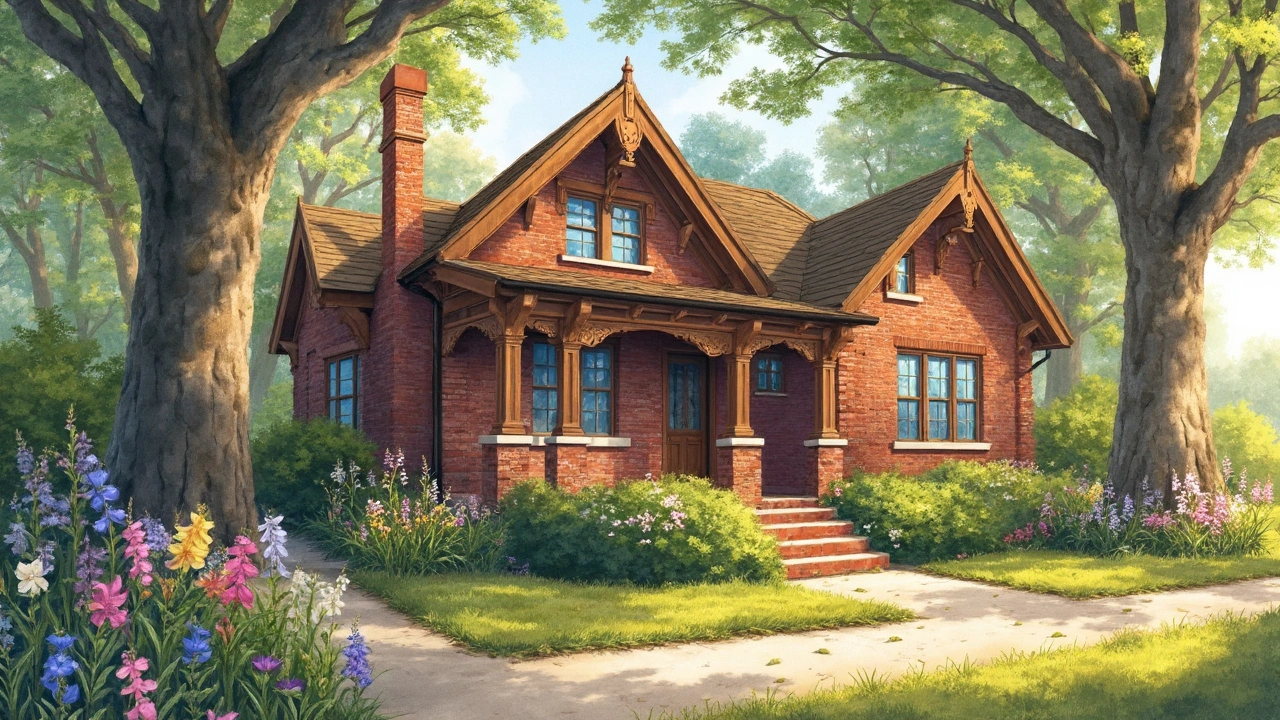Exploring the American Craftsman style is like stepping into a world where beauty and function dance in harmony. This treasured design approach emphasizes detailed craftsmanship, quality materials, and a love for handmade charm in everyday life. From architecture to furniture, it's all about creating spaces that feel both grounded and inviting. Dive into the heart of this timeless art form to discover its roots and how to easily incorporate it into your own life.
Handmade Beauty in Architecture: Craft, Detail, and How to Use It
Handmade beauty shows up in buildings as carved wood, hand-laid brick, ornate plaster, and ironwork with small imperfections that make a place feel alive. Look for visible tool marks, irregular joints, and materials that age with character. Those signs tell you a space was shaped by hands, not machines.
If you want to bring handmade character into your home, start small. Swap a mass-produced banister for a locally forged iron railing, add a hand-glazed ceramic tile backsplash, or choose reclaimed wood for a mantel. These changes make a room richer without a full renovation.
Spotting real craftsmanship
Check edges and joints. Handmade pieces often show slight asymmetry and variable spacing in brickwork or molding. Smell can help too - old limescale, wood resin, and lime plaster have distinct scents. Ask about provenance: who made it, when, and what tools were used. A good maker will tell you the story.
Keeping handmade elements looking great
Maintenance matters. Clean gently with natural products - avoid harsh chemicals that strip patina. For wood, use oil or wax rather than polyurethane to keep the look warm. Metalwork benefits from a thin protective coat, not constant repainting. For plaster and stone, hire a conservator for repairs so details stay intact.
Worried about cost? Mix new and handmade. Pair a hand-carved doorway with factory-made windows that mimic period proportions. Use handmade tiles only in focal areas like a hearth or entryway. Reclaimed materials cut cost and add history - check salvage yards and architectural auctions.
Working with craftsmen is a different process. Give clear sketches, but expect suggestions - makers often improve designs during build. Set milestones and inspect work early; small corrections cost less than fixing near the end. Ask for samples before full production.
Where to find inspiration on this site: explore articles on American Craftsman and Beaux-Arts for ornament and joinery ideas, check Greek and Colonial posts for classical proportion and hand-cut masonry, and read about Renaissance and Roman techniques for old-world methods that still work today.
Sourcing materials and makers is easier if you know where to look. Start with local guilds, makers' markets, and regional preservation groups - they often list craftspeople and salvaged materials. Online forums and social media groups are good for photos and recommendations, but always visit a maker's shop or see samples in person. Get written estimates and timelines; custom work has real lead times.
Budget smart: set a cap, choose focal points, and accept some imperfection. Handmade means variation; that's the point. If preservation is your goal, document original details with photos before work starts. For big projects, hire a designer experienced with historic materials - they can translate old details into modern code and keep costs predictable.
Ready to try handmade beauty? Start with one visible element, find a trusted maker, and plan for maintenance. The payoff is a home that feels personal, durable, and full of stories. Start small, plan well, and enjoy a home that tells a story for generations, every day.

